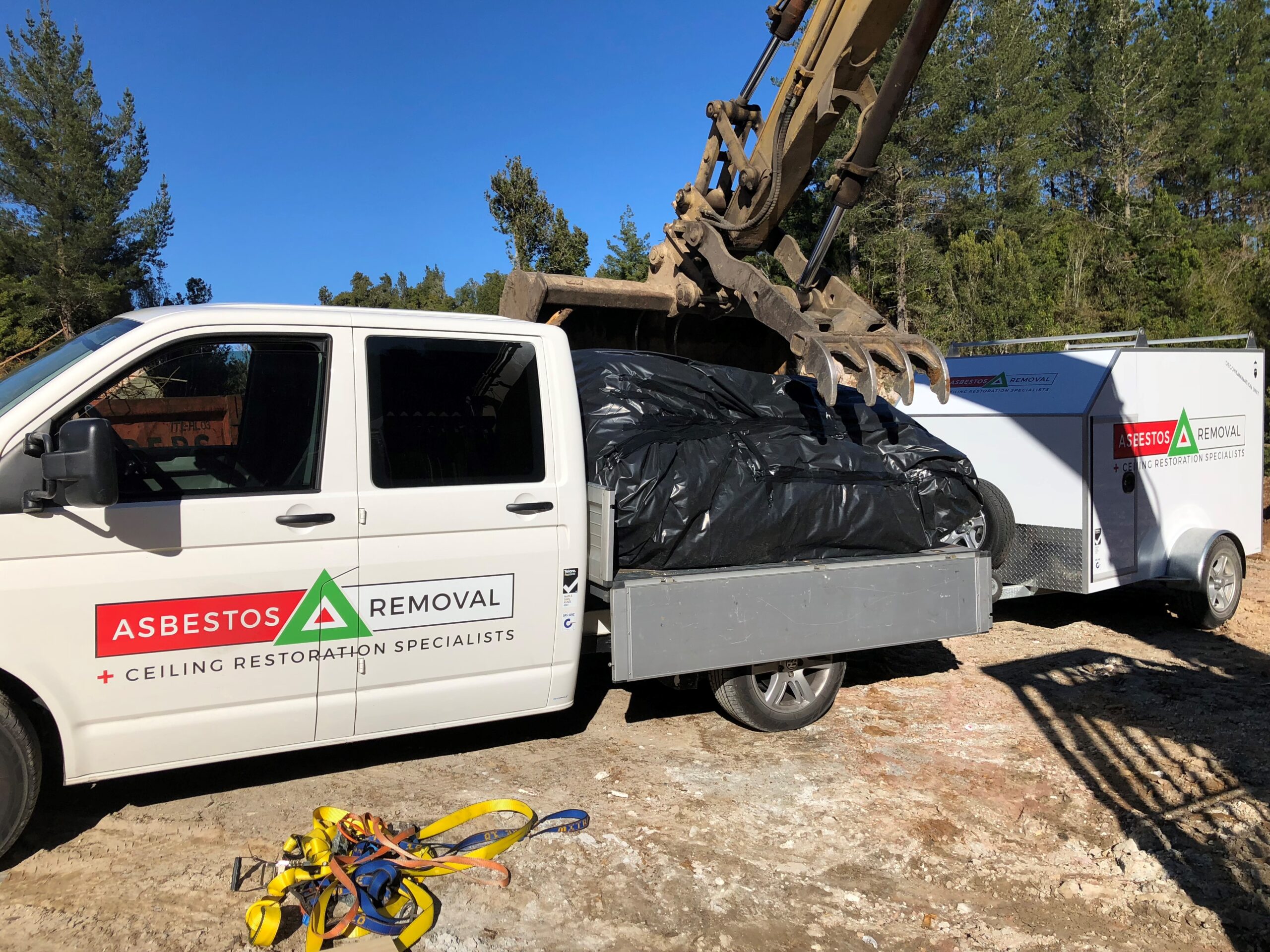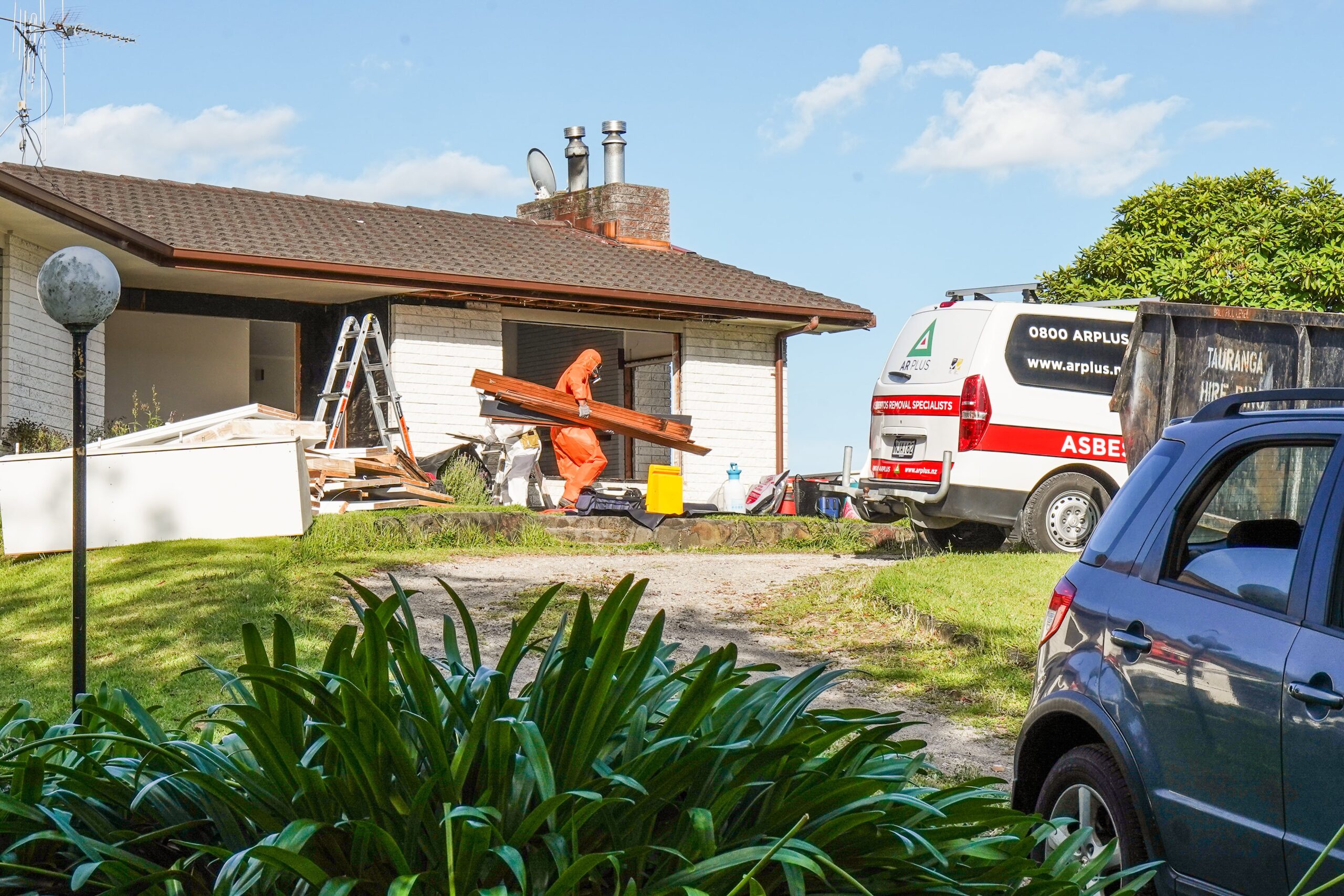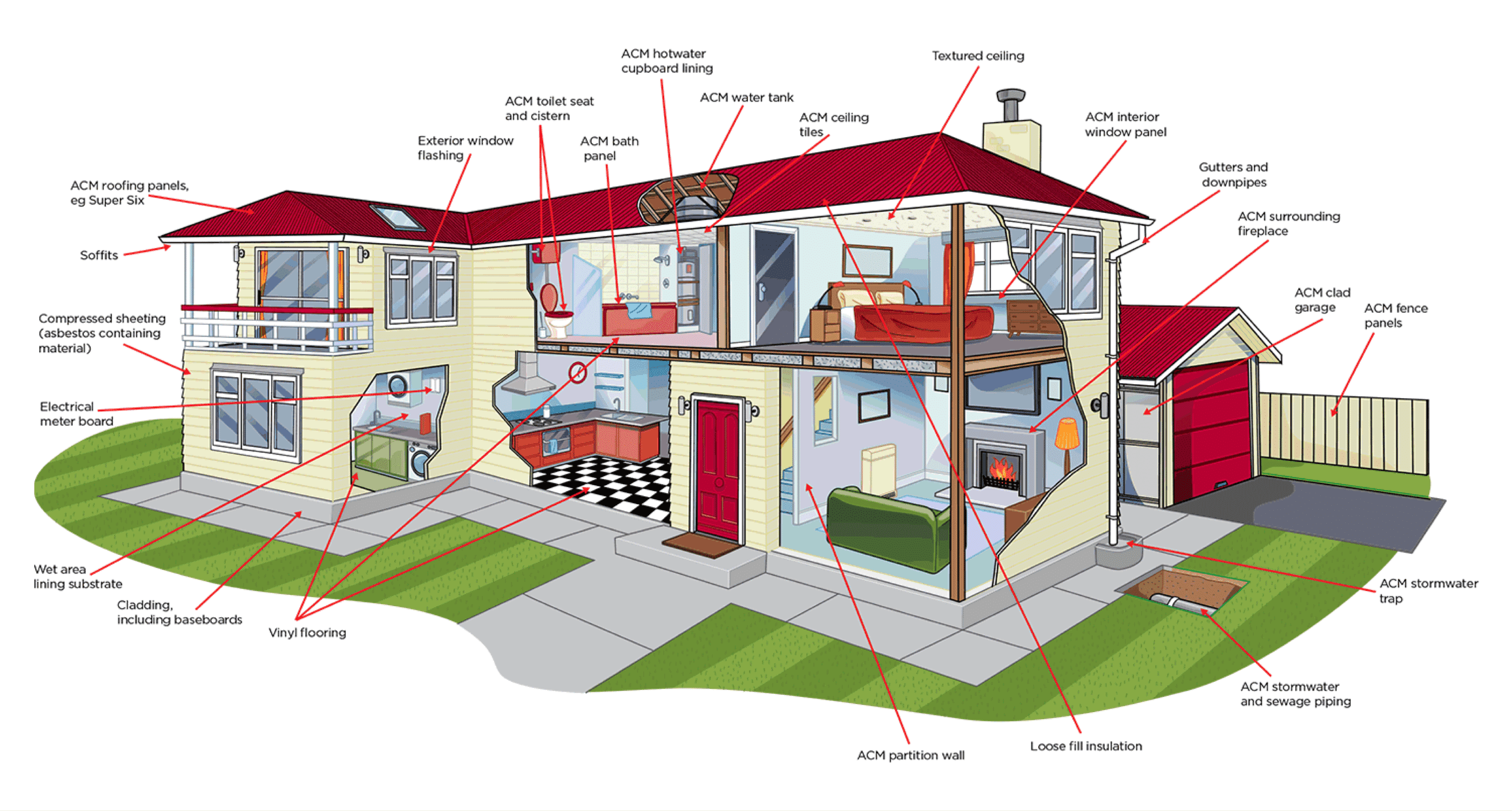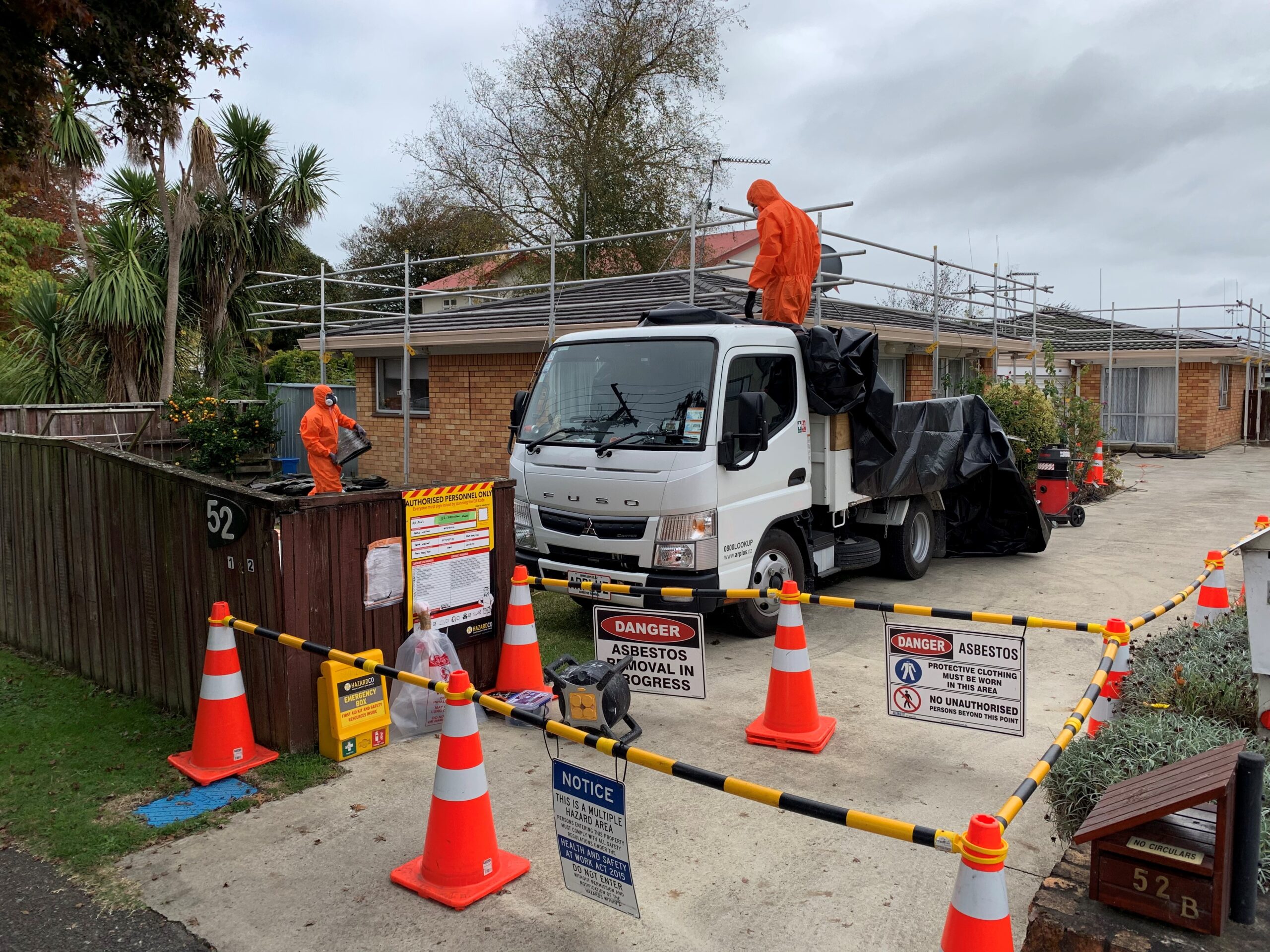About Asbestos
What is Asbestos?

White asbestos was the most common form of asbestos used in New Zealand, followed by brown asbestos; and blue to a lesser extent.
Under a microscope, white asbestos looks different from brown and blue asbestos.
White asbestos has long, curly fibres, which are flexible enough to spin and weave into fabric. Its versatility made it the most common type of asbestos in building and household products.
Brown asbestos has harsh, spiky fibres. It was mostly mined in Africa, and was often used in asbestos cement sheet and pipe insulation. It was also used in insulating board, ceiling tiles and thermal insulation.
Blue asbestos is known for its excellent heat resistance and ability to repel water. It was mostly mined in South Africa, Bolivia and Australia. In South Africa it was called ‘woolly stone.’ It has straight, thin, blue fibres.
Blue asbestos was used to insulate steam engines, and is also found in some spray-on coatings, pipe insulation and cement products. It is brittle, and products containing blue asbestos often malfunction. This increases the potential of airborne asbestos exposure for people doing maintenance, repair and replacement work.
Blue asbestos is claimed to be the ‘most dangerous asbestos’ because its fibres are so thin. This makes them easy to inhale and lodge in the linings of a person’s lungs. However, all types of asbestos should be treated with equal caution, because all of their fibres can be inhaled into the lungs.


A Brief History of Asbestos
Asbestos has been used for thousands of years. Archaeologists believe people living in the Stone Age (about 750,000 years ago) used asbestos in candle and lamp wicks.
Approximately two and a half thousand years ago in Finland, people used asbestos to strengthen clay pots and make them heat-resistant. Ancient Greeks and Romans wove asbestos into material for shrouds, tablecloths and napkins.
During the Industrial Revolution, asbestos was mined and manufactured in massive amounts. People liked it because it was ‘flameproof’, waterproof and resistant to chemicals and electricity. Most importantly, it was malleable – an excellent product for insulating boilers and engines, and for building and binding things.
Once asbestos mining became mechanised, it became a cheap and widespread product. However, the link between asbestos and ill health was not thoroughly investigated until the early 20th century.

Asbestos and New Zealand

Asbestos Ban
It became illegal to import blue and brown asbestos into the country in its raw form from 1984. Asbestos-containing products (also known as ACMs) in New Zealand at the time were used until supplies ran out.
On 1 October 2016, it became illegal to import asbestos-containing products into New Zealand.

Asbestos in Building Materials
Asbestos in Houses and the Workplace
• Insulating Board
• Friction Linings
• Fire Doors
• Gas or Electric Heaters
• Fuse Boxes
• Gaskets
• Lagging around Pipes
• Sprayed Insulation
• Brake Linings



Asbestos-Related Diseases
In 2010 around 170 people died of asbestos-related diseases. Breathing in airborne asbestos fibres is a serious risk to health. Once the fibres are breathed in, they lodge in the lungs and may cause diseases like asbestosis, lung cancer and mesothelioma. Pleural Mesothelioma is the most common form of mesothelioma (the cancer caused by asbestos).
Pleural Mesothelioma is the most common form of mesothelioma
Most asbestos-related diseases take around 20 years before their symptoms start to show.
The health risks increase when:
• People inhale more fibres
• Exposure is more frequent
• Exposure occurs over a long period of time.
All types of asbestos can cause asbestos-related disease.
Class A Certified Asbestos Removal
(AS/NZS 4801:2001 Health and Safety System)
(ISO 45001:2018 Health and Safety System)

CONTACT US
Get a FREE Quote
for Our Asbestos Removal Service
AR Plus offers the best asbestos removal services in Tauranga and the Western Bay of Plenty. We prioritise your safety and satisfaction, delivering hassle-free solutions for healthier, happier spaces. Contact us today and experience the AR Plus difference!



